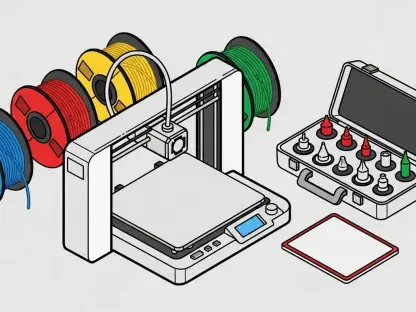In the realm of pharmaceutical production, ensuring the safety and efficacy of Active Pharmaceutical Ingredients (APIs) is paramount. However, with increasing regulatory scrutiny, supply chain challenges, and the complexities associated with modern drug formulations, the industry faces significant hurdles. To address these challenges, Quality by Design (QbD) has emerged as a proactive framework that embeds quality measures directly into the manufacturing process, in alignment with Good Manufacturing Practices (GMPs). By fundamentally transforming traditional methods, QbD paves the way for a safer, more efficient future in API manufacturing.
Improved Drug Safety and Efficacy
Proactive Quality Design
QbD emphasizes designing quality into the manufacturing process right from the outset, rather than relying on post-production compliance checks. This proactive approach leverages risk assessment tools and real-time data monitoring to ensure that critical quality attributes such as stability, potency, and purity are consistently met across all production batches. By identifying process parameters and continually monitoring them, QbD can significantly reduce the variability in API quality and mitigate potential safety risks to patients. This systematic attention to quality not only enhances drug efficacy but also builds greater trust in pharmaceutical products among healthcare professionals and patients alike.
Moreover, the implementation of QbD offers a significant shift away from traditional, reactionary methods, where issues were often identified and rectified after production. In contrast, QbD facilitates early detection of deviations and problems, enabling manufacturers to address them promptly and effectively. This dynamic, real-time quality control minimizes the likelihood of batch failures, ensuring a higher level of consistency and reliability in the final product. In an industry where patient safety is the ultimate goal, QbD’s emphasis on proactive quality assurance represents a substantial advancement.
Regulatory Endorsement
The shift towards QbD is also being driven by regulatory bodies such as the USFDA, EMA, and ICH, which now endorse QbD as a regulatory requirement rather than just a best practice. These agencies recognize the value of a data-driven approach to demonstrate a thorough understanding of the manufacturing process. By moving away from trial and error, QbD allows for data-based regulatory submissions, simplifying the approval process and ensuring that the pharmaceutical products meet stringent safety and efficacy standards. This alignment with regulatory expectations provides manufacturers with a clearer pathway to compliance and market approval.
The integration of QbD within the regulatory framework prompts manufacturers to maintain meticulous records of their processes and employ thorough risk assessments. This advance ensures that any potential hazards are identified and controlled throughout the production lifecycle. As global regulatory bodies continue to push for scientific and risk-based approaches, QbD presents an opportunity for pharmaceutical companies to not only meet but exceed compliance requirements, thus gaining a competitive edge in the marketplace.
Enhanced Manufacturing Efficiency
Process Flexibility and Efficiency
QbD stands to revolutionize the efficiency of API manufacturing by significantly improving process flexibility and reducing operational downtimes. By understanding and controlling process variables, manufacturers can achieve higher output while minimizing deviations. This improved efficiency translates to cost savings, as fewer resources are wasted on failed batches or rework. Additionally, the ability to swiftly adapt to changes in production demands or raw material variability ensures that manufacturing processes remain robust and reliable, even under fluctuating conditions. Consequently, QbD contributes to a more streamlined and cost-effective production environment.
Furthermore, incorporating QbD into manufacturing processes facilitates better integration with Good Distribution Practices (GDP), enhancing overall supply chain predictability. Real-time data measurements allow for immediate adjustments and decision-making, optimizing the supply chain’s responsiveness and resilience. The interplay between QbD and GDP ensures that APIs not only meet high-quality standards at the point of production but also maintain these standards throughout the distribution process, delivering safe and effective pharmaceutical products to the end-users.
Overcoming Challenges
While the benefits of QbD are substantial, the transition to this framework is not without its challenges. High implementation costs, resistance to change, and the complexities of integrating advanced analytics and data monitoring systems can be significant barriers for manufacturers. However, these challenges are outweighed by the long-term benefits of reduced batch failures, improved regulatory filing efficiencies, and an overall enhancement in production quality. As companies invest in the necessary technology and expertise to implement QbD, they can anticipate a return on investment through greater operational efficiency and market competitiveness.
To successfully navigate these challenges, manufacturers need to foster a culture of continuous improvement and innovation. Training and development programs for employees, coupled with investments in cutting-edge technology, will be crucial in embedding QbD principles into everyday practices. By embracing these changes, manufacturers will not only comply with regulatory requirements but also set new standards for quality and efficiency within the industry.
Future Considerations
Competitive Edge and Compliance
Looking ahead, QbD will play an increasingly critical role for API manufacturers aiming to gain a competitive edge and ensure compliance with future regulatory frameworks. The emphasis on designing for quality proactively, rather than reactively, positions QbD as an essential element for the industry’s progression. Companies that do not adopt QbD risk falling behind as global regulatory bodies continue to advocate for more scientific and risk-based approaches to pharmaceutical manufacturing. The integration of QbD will become synonymous with innovation, pushing the industry towards a more predictable and safe landscape for drug production.
As the industry continues to evolve, the adoption of QbD will likely become more widespread, driven by both regulatory mandates and competitive pressures. Pharmaceutical companies that proactively integrate QbD into their operations will be better positioned to navigate future challenges and capitalize on emerging opportunities. By ensuring that quality is built into every step of the manufacturing process, these companies will set themselves apart as leaders in the market, offering products that meet the highest standards of safety and efficacy.
Advancing Industry Standards
In the world of pharmaceutical production, ensuring the safety and efficacy of Active Pharmaceutical Ingredients (APIs) is absolutely crucial. However, the industry confronts major obstacles due to escalating regulatory scrutiny, supply chain issues, and the inherent complexities of modern drug formulations. To tackle these challenges, the Quality by Design (QbD) approach has come to the fore as a proactive framework. This methodology integrates quality measures directly into the manufacturing process, ensuring compliance with Good Manufacturing Practices (GMPs). By overhauling traditional methods, QbD opens the door to a safer, more efficient future for API manufacturing. This approach not only improves the reliability of pharmaceutical products but also enhances production processes and reduces risk. Consequently, QbD helps to assure both regulators and consumers of the high standards upheld throughout the pharmaceutical supply chain. Overall, QbD is essential in advancing the industry by making API production more robust and trustworthy in the face of modern demands.









